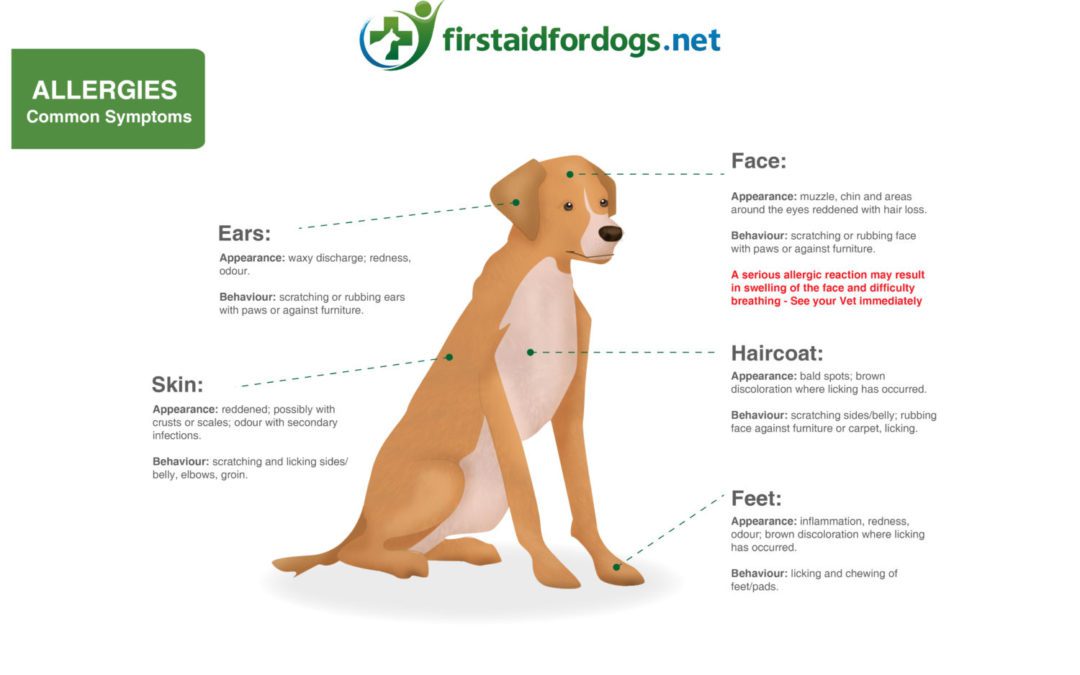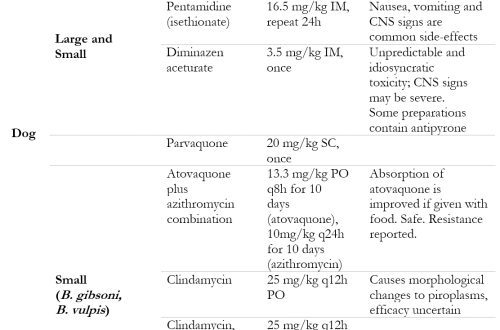
How Dog Allergies Work and What You Can Do to Help Your Pet Feel Better
Dogs, like people, suffer from seasonal allergies. It manifests itself, as a rule, in the form of itching, but there are other characteristic signs. For example, if a pet has a runny nose, excessive itching, or just a little strange behavior, this could very well be the result of an allergy.
Ways to identify seasonal allergies in dogs and recommendations for helping a four-legged friend at this time are later in the article.
Contents
Signs of seasonal allergies in dogs
The manifestation of allergies in dogs is slightly different from the reaction of humans. Itchy skin and recurrent ear infections are the most common signs of an allergen reaction in four-legged pets. The animal may experience redness and swelling of the eyes, a runny nose and bouts of sneezing.
Itching in a dog can range from severe to moderate and most often occurs in the armpits, groin, muzzle, or paws.
Pets can comb itchy places to the blood. Therefore, if the dog itches, rubs against carpet or furniture, bites or licks itself more than usual, it is worth taking it to a veterinarian. This behavior can lead to secondary infections, signs of which include an unusual odor and discharge that will require treatment.

Allergy in dogs: causes of seasonal illness
Seasonal allergies in dogs are caused by inhalation or contact with an allergen to which they are sensitive. An allergy occurs when the immune system becomes less tolerant of an allergen. Thereafter, every time the immune system encounters such an allergen in the environment, an inflammatory reaction occurs, causing some or all of the symptoms mentioned above.
Pathology is caused by factors that are present only at certain times of the year. This can include tree and grass pollen, dust and dust mites, mold and mildew, flea bites, and fresh grass in spring or summer.
How to Diagnose Seasonal Allergies
Your veterinarian can help determine if your dog has seasonal allergies or other health problems. The specialist will make these conclusions based on the pet’s medical history, clinical examination, laboratory tests and response to therapy. Taking your dog to a dermatologist for an allergy test is another way to diagnose seasonal allergies.
Skin tests are usually performed by a board-certified veterinary dermatologist who evaluates the pet’s response to a microdose of various allergens. This helps to determine sensitivity to a given allergen. Based on this information, the doctor will be able to give a series of injections, which over time can reduce the intensity of the dog’s reaction to this allergen.
You can also take a blood test, although skin tests are considered a more accurate method.
How to treat seasonal allergies
One way to manage seasonal allergies in dogs is to use an allergy serum prescribed by a veterinary dermatologist. This requires a series of injections of the allergen, the dose of which is gradually increased over time. For such injections, very small needles are used, but, following the injection technique, injections can be done at home.
Allergen injections generally have few side effects, making them effective for dogs with moderate to severe allergies.
If a dog has only a mild form of seasonal allergies, it may respond well to medications, including antihistamines. It is important that they are prescribed by a veterinarian.
 Another option is oral prescription drugs. It is possible to give your dog fast-acting anti-itch medications that can be discontinued without negative side effects. There are drugs that modulate the immune system’s response to allergens. Both types of drugs can be purchased with a prescription from a veterinarian. Their appointment is accompanied by annual examinations and / or blood tests.
Another option is oral prescription drugs. It is possible to give your dog fast-acting anti-itch medications that can be discontinued without negative side effects. There are drugs that modulate the immune system’s response to allergens. Both types of drugs can be purchased with a prescription from a veterinarian. Their appointment is accompanied by annual examinations and / or blood tests.
It is important to remember that all prescription medications have side effects and should be discussed with your veterinarian. It’s always best to check with your doctor before giving your dog anything new, especially over-the-counter drugs. This will help ensure that the type of medication and dosage is appropriate for the pet’s problem.
How to Manage Seasonal Allergies in Dogs with Nutrition
Diet adjustments can help treat allergies. Certain dietary dog foods are specifically formulated to support skin health. They will become part of multimodal therapy. It’s as easy as feeding your dog a regular diet. Be sure to consult with your doctor about whether it is possible to change the pet’s food. If he recommends a dietary food, you need to ensure the gradual transition of the dog to a new food.
How to Control Your Dog’s Exposure to Seasonal Allergies
To prevent seasonal allergies after playing outdoors, before letting the dog into the house, you need to wipe her lower body and paws with wet wipes. This will help remove allergens from the surface of your pet’s skin.
Your dog may benefit from weekly baths with specialized shampoos. It’s important to make sure the water is warm, as hot water dries out and irritates your four-legged friend’s skin. Dogs generally respond well to medicated shampoo baths. Prescription lotions and sprays are also available in pharmacies.
Although seasonal allergies are an annual occurrence, their impact on a dog’s well-being can be reduced with proper treatment and active preventive measures. Of course, not every dog will fit the same way to deal with seasonal allergies, but with the help of trial and error, it will gradually be possible to provide a pet with a decent standard of living during allergy season.





